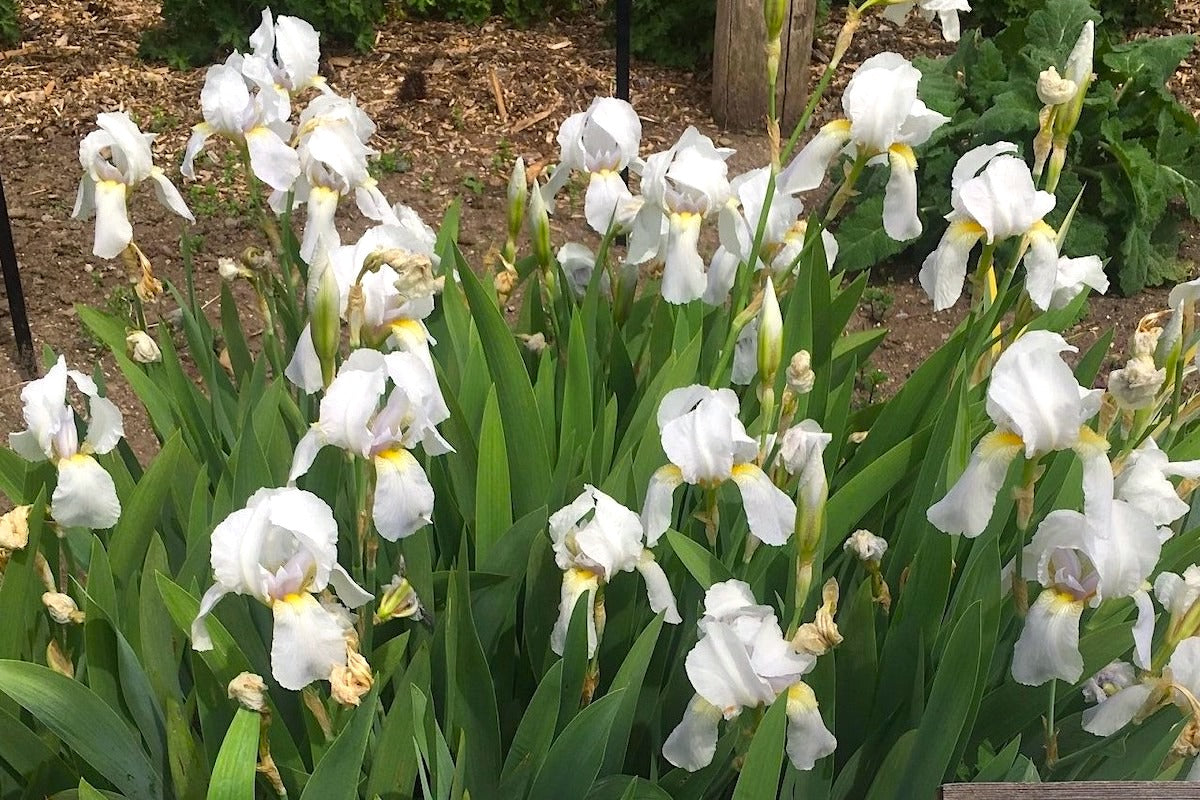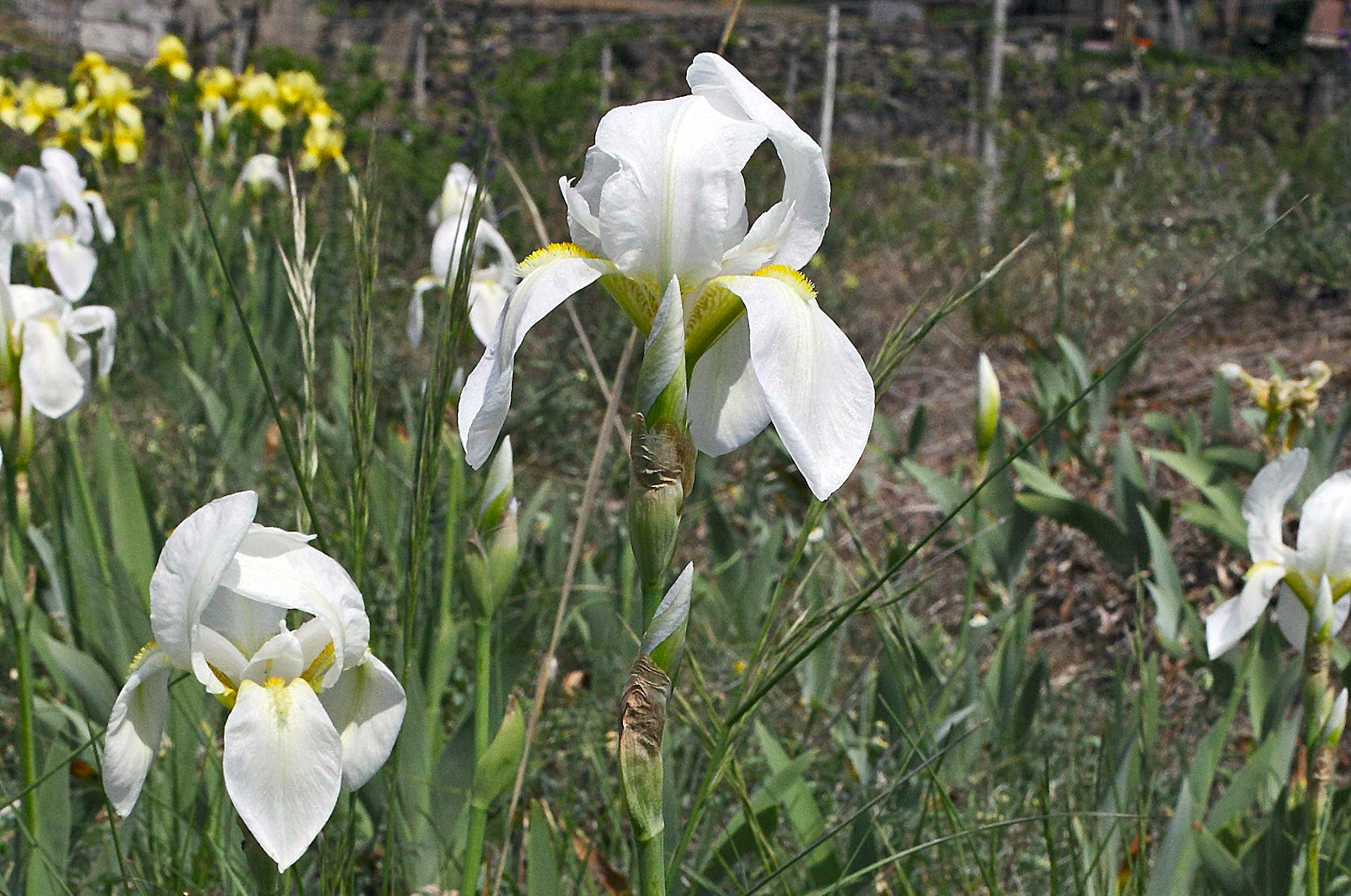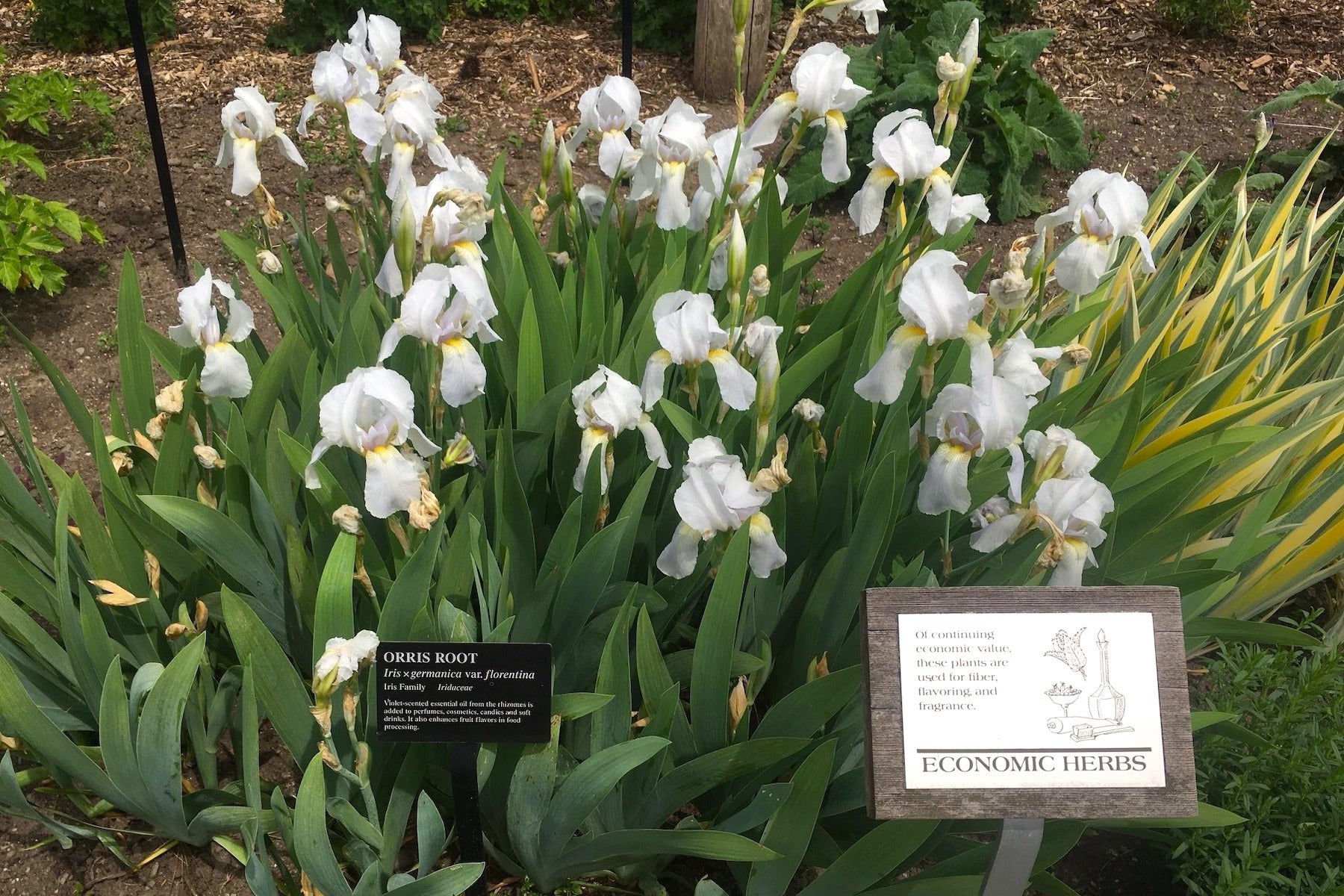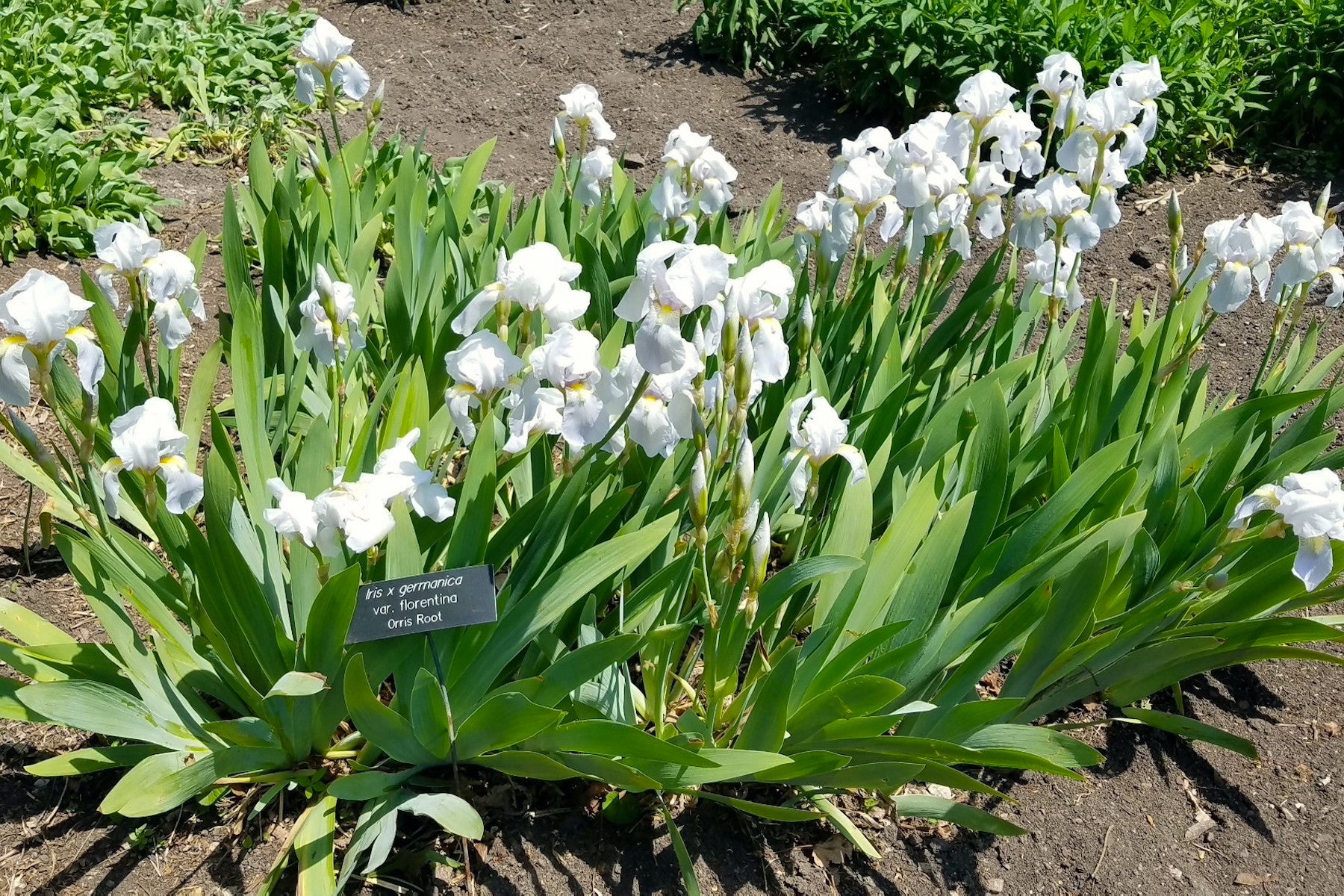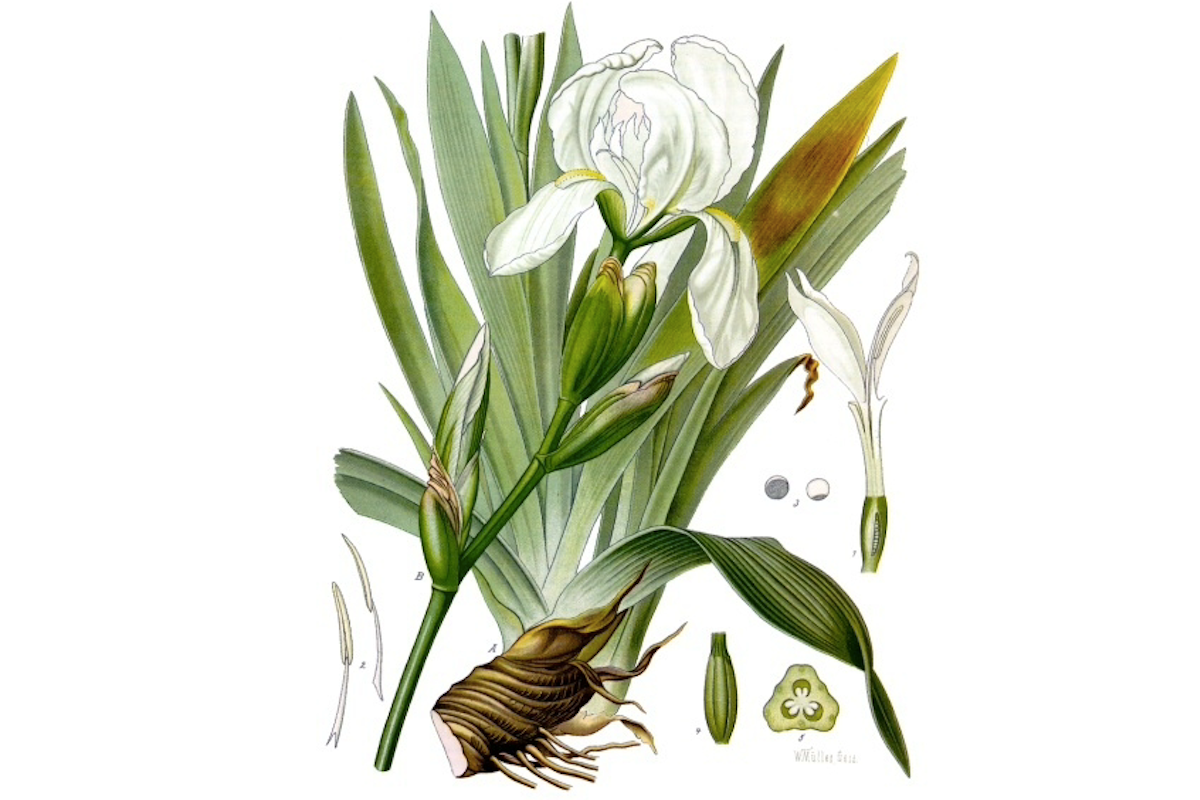Iris 'Florentina' (Ib/tb)
Approx. 0.5 litre pot
About this cultivar:
Iris 'Florentina' (Ib/tb) is a historic bearded iris, formerly grown as the source of the aromatic orris root, a scented substance used in perfumes, soaps, tooth cleanser, and clothes washing powder. It is also used for maturing Chianti wine, and as an ingredient in Bombay Sapphire Gin. Yet, it is also a great ornamental -The French call it 'la flambe blanche' (the white torch of the garden).
It is a vigorous, spreading plant with slightly glaucous foliage, sometimes remaining semi-evergreen, and stems bearing medium sized flowers. The standards are wide, erect, cupped, the falls are narrow, distinctly drooping, both are silvery white with a slight blue tinge and beards are yellow.
Often thought a species, other names have been Iris germanica var. florentina and Iris florentina. The RHS now have it named as a cultivar. Has the RHS AGM.
it is considered one of the irises (with Iris pseudacorus) that inspired the fleur-de-lys of heraldry, which was the symbol of the city of Florence for centuries, and is on the coat of arms of the city - hence the name.
- Position: Full sun, partial shade
- Soil: Almost any soil, grows well in Ballyrobert
- Flowers: May, June
- Other features: Royal Horticultural Society Award of Garden Merit (RHS AGM), Cut Flowers or Dried Flowers
- Hardiness: H7 - Hardy in the severest European continental climates (< -20°C), Fully hardy - grows well in Ballyrobert
- Habit: Clump forming
- Foliage: Deciduous
- Height: 100 - 120 cm (3.5 - 4 ft)
- Spread: 45 - 60 cm (1.5 - 2 ft)
- Time to full growth: 2 to 5 years
- Plant type: Herbaceous Perennial
- Colour: Green, blue, white
- Goes well with: Hosta, Hemerocallis, Geranium
About this genus:
Iris (i-ris) is a genus of 260–300 species of flowering plants with showy flowers. It takes its name from the Greek word for rainbow, referring to the wide variety of flower colours found among the many species. As well as being the scientific name, Iris is also used as a common name. Long in cultivation there seem to be as many cultivars as plants. Culturally the genus has had quite an impact. The fleur-de-lis, a stylized Iris, first occurs in its modern use as the emblem of the House of Capet (rulers of France 987 to 1328). It is also the universal symbol for Scouting. Many artists have a 'thing' with Iris, not least Van Gogh- who was a fan of Iris (not just sunflowers).... see images opposite!
As a group, Iris species can range from drought-tolerant dry land perennials to bog dwellers and from sun to shade, so there is no set of cultivation rules for the genus as a whole. In general though the cultivars we have in our garden (and sell), are tough, low maintenance plants perfect for wet gardens and similar sites.
Try pairing irises in the garden with Hosta, Hemerocallis, Geranium. They also look great as a cut-flower; the reason you don't get them in florists is that they don't transport well.

